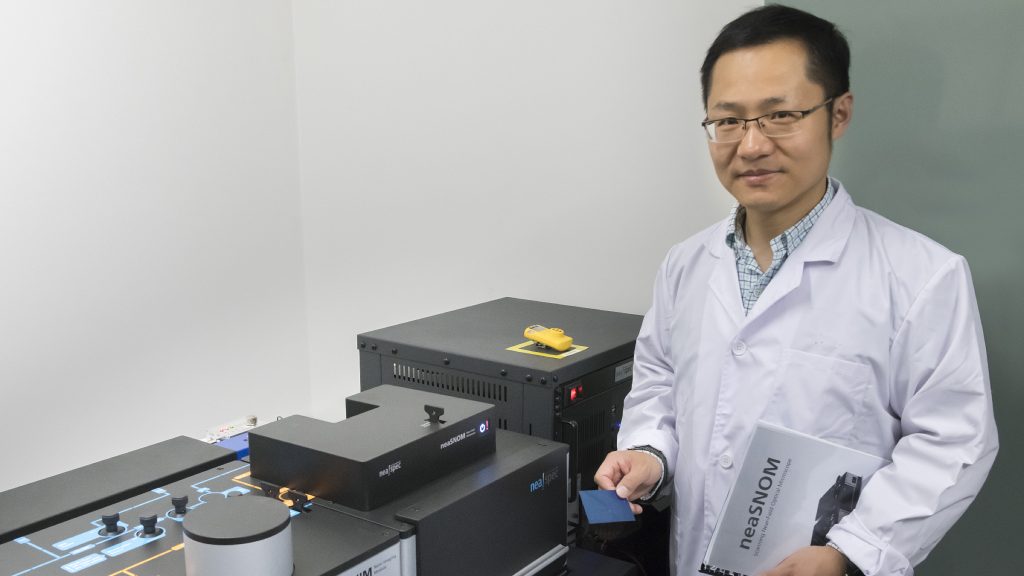Long live nanolight!

Qiaoliang Bao – ANFF-VIC Tech Ambassador for FLEET next to MCNs NeaSNOM. The scattering-type near-field optical microscopy facility was used for polariton measurements in the study.
An ANFF-VIC-enabled international team led by researchers from Soochow University (Suzhou, China), Monash University (Melbourne, Australia), University of Oviedo (Asturias, Spain), and CIC nanoGUNE (San Sebastián, Spain) have discovered squeezed light (‘nanolight’) in the nanoscale that propagates only in specific directions along thin slabs of molybdenum trioxide – a natural anisotropic 2D material.
The team, led by Qiaoliang Bao – an ANFF-VIC Tech Ambassador working for FLEET and Monash Engineering, Pablo Alonso-González – University of Oviedo, Spain, and Rainer Hillenbrand – CIC nanoGUNE, San Sebastián, Spain, have discovered ultra-confined infrared polaritons that propagate only in specific directions along thin slabs of the natural 2D material molybdenum trioxide (α-MoO3).
Besides its unique directional character, this nanolight lives for an exceptionally long time, and thus could find applications in signal processing, sensing or heat management at the nanoscale.
Future information and communication technologies will rely on the manipulation of not only electrons but also of light at the nanometre-scale.
Qiaoliang Bao
Qiaoliang Bao works at the nanoscale, trapping photons in atomically-thin, two-dimensional materials, where high binding energies create a quantum state known as a superfluid.
The aim is a new generation of superfluid transistors that will ‘switch’ using much less energy than conventional electronics.
Such work requires access to the best nanofabrication and characterisation facilities, and Qiaoliang’s team at Monash University’s Faculty of Engineering works closely with the Melbourne Centre for Nanofabrication (MCN), the flagship facility of the Australian National Fabrication Facility (ANFF).
Qiaoliang has been recently namedas an ANFF-VIC Technology Fellow Ambassador. The program forges a strong Australian nanofabrication community, improves procedures, and creates ‘champions’ of ANFF facilities.


